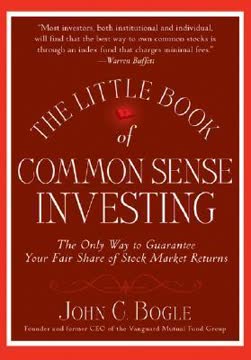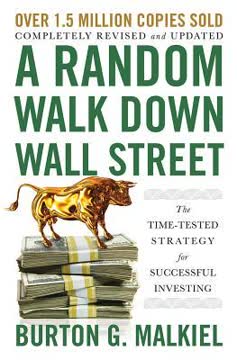Key Takeaways
1. Dividend-paying stocks outperform the market over time
Companies that raised or initiated dividends from 1972 to 2010 did significantly better than those that didn't.
Historical outperformance. Dividend-paying stocks have consistently outperformed non-dividend payers over long periods. From 1972 to 2010, dividend raisers and initiators generated a compound annual growth rate of 9.84%, compared to 7.59% for dividend maintainers and 1.76% for non-payers.
Stability and quality. Companies that pay and raise dividends tend to be more stable, profitable, and well-managed. They often have strong cash flows, established business models, and a commitment to returning value to shareholders. This stability can lead to lower volatility and better risk-adjusted returns over time.
Dividend Aristocrats. The S&P Dividend Aristocrats Index, which includes companies that have increased dividends for at least 25 consecutive years, has significantly outperformed the broader S&P 500 index. From 1990 to 2011, Aristocrats returned 901% versus 469% for the S&P 500.
2. The power of compound interest: Reinvesting dividends accelerates wealth
Compounding is all about momentum. The first several years, it seems like not much is going on, but watch what happens once you get a few more years out.
Exponential growth. Reinvesting dividends allows investors to purchase additional shares, which in turn generate more dividends. This creates a powerful snowball effect that accelerates wealth accumulation over time. The impact of compounding becomes more pronounced the longer an investor stays invested.
Real-world example. A $10,000 investment in Procter & Gamble in 1981, with dividends reinvested, would have grown to $582,725 by 2011. This same investment would generate $18,341 per year in dividends alone, nearly double the original investment amount.
Patient investing rewarded. While the effects of compounding may seem small in the early years, the power of reinvested dividends becomes increasingly significant over longer time horizons. Investors who can resist the urge for immediate income and instead reinvest dividends can potentially achieve much higher total returns.
3. Seek companies with a history of consistent dividend growth
Chances are, a company that has raised its dividend for 25 years in a row is going to do it again in year 26. And again in year 27. And in year 28.
Dividend growth indicators:
- Dividend Aristocrats: S&P 500 companies with 25+ years of consecutive dividend increases
- Dividend Champions: Any company with 25+ years of consecutive dividend increases
- Dividend Contenders: Companies with 10-24 years of consecutive increases
- Dividend Challengers: Companies with 5-9 years of consecutive increases
Management commitment. Companies with long dividend growth streaks demonstrate a strong commitment to shareholder returns. This often reflects confident management teams and stable, growing businesses.
Inflation protection. Dividend growth helps protect investors from the eroding effects of inflation. A company that consistently raises its dividend at a rate higher than inflation helps maintain and increase the purchasing power of the income stream over time.
4. Focus on dividend safety: Payout ratio and cash flow are key
Cash flow is a bit harder to fudge. Of course, a motivated executive who wants to commit outright fraud probably can do so, but manipulating cash flow numbers is more difficult as it represents the actual amount of cash generated by the company.
Payout ratio. The payout ratio (dividends paid divided by earnings or cash flow) is a crucial metric for assessing dividend safety. A lower payout ratio indicates more room for dividend growth and a better ability to maintain dividends during downturns. Aim for payout ratios of 75% or lower for most industries.
Cash flow focus. When evaluating dividend safety, prioritize cash flow over reported earnings. Cash flow is harder to manipulate and provides a clearer picture of a company's ability to sustain and grow dividends. Look for companies with consistent and growing free cash flow.
Warning signs:
- Sudden spikes in payout ratio
- Declining cash flow or earnings
- Stagnant or decreasing dividend growth rates
5. The 10-11-12 System: A framework for dividend investing success
To achieve 11% yields and 12% average annual returns in ten years, we'll need to make some assumptions.
The system explained:
- 10: Aim for a 10-year investment horizon
- 11: Target an 11% yield on cost after 10 years
- 12: Seek a 12% average annual total return over 10 years
Key components:
- Starting yield: Aim for 4.7% or higher
- Dividend growth rate: Look for 10% annual growth or higher
- Payout ratio: Seek 75% or lower (based on cash flow)
Flexibility and adaptability. While these targets provide a solid framework, investors should remain flexible. Market conditions and individual stock characteristics may require adjustments to achieve the best risk-adjusted returns.
6. Diversification is crucial, even within dividend stocks
Although it may be tempting to load up on dividend payers with 10% yields, that's likely a recipe for disaster.
Sector diversification. Spread investments across various sectors to reduce risk and capture different economic cycles. Consider exposure to industrials, technology, energy, healthcare, consumer staples, and other sectors.
Yield range. Don't focus solely on the highest-yielding stocks. A mix of yields can provide both current income and future growth potential. Balance higher-yielding stocks with those that have lower yields but higher dividend growth rates.
Company size and maturity. Include a mix of large, established dividend payers (like Dividend Aristocrats) along with smaller companies or those earlier in their dividend growth journey. This can provide stability and the potential for higher future growth.
7. Use options strategically to enhance dividend stock returns
Selling a covered call is a great way to boost the income you receive from your stock holdings.
Covered calls. Selling covered calls against dividend stocks can generate additional income, potentially boosting overall returns. This strategy works well for investors seeking current income rather than long-term capital appreciation.
Benefits:
- Additional income beyond dividends
- Potential downside protection
- Opportunity to sell stocks at higher prices
Risks:
- Limiting upside potential if stocks rise significantly
- Potential for stocks to be called away
- Requires more active management
Put selling. Selling cash-secured puts can be a way to potentially acquire dividend stocks at lower prices while generating income. This strategy is more complex and carries additional risks compared to covered calls.
8. Consider international dividend stocks, but be aware of unique risks
Many foreign dividend payers currently have considerably higher yields than their American counterparts.
Potential benefits:
- Higher yields
- Geographical diversification
- Exposure to different economic cycles and growth opportunities
Unique risks:
- Currency fluctuations affecting dividend payments
- Political and economic instability in some markets
- Less frequent dividend payments (often semi-annual or annual)
- Potential for lower accounting and regulatory standards
Approach. Treat international dividend stocks as a complement to a core portfolio of domestic dividend growers. Limit exposure to manage risk while still capturing potential benefits.
9. Tax implications: Understand the benefits of qualified dividends
Dividend tax rate=15%
Qualified dividends. Most dividends from U.S. companies and many foreign companies qualify for preferential tax treatment. As of 2012, qualified dividends are taxed at a maximum rate of 15% for most investors, compared to ordinary income tax rates.
Tax-advantaged accounts. Consider holding dividend stocks in tax-advantaged accounts like IRAs to defer or potentially eliminate dividend taxes. This can significantly enhance long-term returns through more efficient compounding.
Special cases:
- REITs, MLPs, and BDCs often have unique tax implications
- Some distributions may be classified as return of capital, affecting cost basis
- Foreign dividend taxes may be eligible for a tax credit
Stay informed. Tax laws can change, potentially affecting the after-tax returns of dividend investing strategies. Consult with a tax professional and stay updated on relevant tax policies.
Last updated:
FAQ
What's "Get Rich With Dividends" about?
- Focus on Dividend Investing: "Get Rich With Dividends" by Marc Lichtenfeld is centered around a proven system for earning double-digit returns through dividend investing.
- 10-11-12 System: The book introduces the 10-11-12 System, which aims to generate 11% yields and 12% average annual returns over ten years.
- Long-Term Wealth Creation: It emphasizes the power of compounding dividends and the importance of reinvesting them to build significant wealth over time.
- Practical Guidance: The book provides practical advice on selecting dividend stocks, setting up a portfolio, and understanding the nuances of dividend growth and payout ratios.
Why should I read "Get Rich With Dividends"?
- Proven Strategy: The book offers a tested strategy for achieving financial independence through dividend investing, which is particularly appealing in uncertain economic times.
- Comprehensive Guide: It covers everything from the basics of dividend stocks to advanced strategies like using options to enhance returns.
- Easy to Implement: Lichtenfeld's system is designed to be simple and requires minimal time commitment, making it accessible for both novice and experienced investors.
- Long-Term Benefits: By following the book's advice, readers can potentially secure a stable income stream and grow their wealth significantly over the long term.
What are the key takeaways of "Get Rich With Dividends"?
- 10-11-12 System: Focus on achieving 11% yields and 12% average annual returns over ten years through strategic dividend investing.
- Importance of Compounding: Reinvesting dividends is crucial for maximizing returns and building wealth over time.
- Stock Selection Criteria: Emphasizes the importance of yield, dividend growth, and payout ratio when selecting stocks.
- Diversification and Risk Management: Highlights the need for a diversified portfolio to mitigate risks and enhance returns.
What is the 10-11-12 System in "Get Rich With Dividends"?
- Yield, Growth, and Returns: The system aims for a 4.7% starting yield, 10% annual dividend growth, and 12% average annual total returns over ten years.
- Stock Selection: Focuses on selecting stocks with a reasonable payout ratio, strong dividend growth, and a solid starting yield.
- Long-Term Strategy: Designed for investors with a long-term horizon, allowing compounding to significantly increase wealth.
- Flexibility: While the system provides guidelines, it allows for adjustments based on individual circumstances and market conditions.
How does "Get Rich With Dividends" suggest selecting dividend stocks?
- Yield and Growth: Look for stocks with a starting yield of at least 4% and a dividend growth rate of 10% or higher.
- Payout Ratio: Ensure the payout ratio is 75% or lower to maintain dividend sustainability.
- Company Fundamentals: Focus on companies with strong earnings, cash flow, and a history of raising dividends.
- Diversification: Build a diversified portfolio across different sectors to manage risk and capture growth opportunities.
What are Perpetual Dividend Raisers according to "Get Rich With Dividends"?
- Consistent Dividend Growth: These are companies that have a long history of raising dividends annually, often for decades.
- Stability and Reliability: They are typically well-established, financially stable companies with predictable cash flows.
- Outperformance: Historically, Perpetual Dividend Raisers have outperformed the broader market with less volatility.
- Investment Appeal: They are attractive for investors seeking steady income and long-term capital appreciation.
How does "Get Rich With Dividends" address market volatility?
- Reinvesting Dividends: In volatile markets, reinvesting dividends allows investors to buy more shares at lower prices, enhancing long-term returns.
- Focus on Income: The book emphasizes income generation through dividends, which can provide stability even when stock prices fluctuate.
- Historical Performance: Dividend stocks, especially Perpetual Dividend Raisers, have historically outperformed during market downturns.
- Long-Term Perspective: Encourages a long-term investment horizon to ride out market volatility and benefit from compounding.
What role do taxes play in "Get Rich With Dividends"?
- Dividend Tax Rate: As of the book's publication, qualified dividends are taxed at a lower rate of 15%, which can impact net returns.
- Foreign Taxes: Discusses the implications of foreign taxes on dividends from international stocks and the use of tax credits.
- Tax-Deferred Accounts: Recommends holding dividend stocks in tax-deferred accounts like IRAs to maximize compounding benefits.
- Return of Capital: Explains how certain distributions, like those from MLPs, can be tax-deferred, affecting investment strategy.
What are the best quotes from "Get Rich With Dividends" and what do they mean?
- "The ideas in this book are one of the most important gifts you can give to yourself or your children." This highlights the transformative potential of dividend investing for financial security.
- "Compounding is like a machine." Emphasizes the power of reinvesting dividends to exponentially grow wealth over time.
- "You have to put some work into it—although much less than with most other investing strategies—and you have to have patience." Stresses the simplicity and long-term nature of the 10-11-12 System.
- "The strongest endorsement of the 10-11-12 System that I can make is this: I’m using it for my investments and for my kids’ money as well." Demonstrates the author's confidence and personal commitment to the strategy.
How does "Get Rich With Dividends" suggest using options to enhance returns?
- Covered Calls: Selling covered calls on dividend stocks can generate additional income, boosting overall returns.
- Risk Management: The strategy involves no risk to principal, only opportunity risk if the stock price rises significantly.
- Volatility Advantage: Selling options on volatile stocks can yield higher premiums, increasing income potential.
- Investor Suitability: Best suited for investors seeking current income rather than those focused on long-term wealth accumulation.
What are the potential risks of investing in foreign stocks according to "Get Rich With Dividends"?
- Currency Fluctuations: Dividends from foreign stocks can be affected by changes in currency exchange rates, leading to inconsistent payouts.
- Political and Economic Risks: Foreign investments may be subject to political instability and economic uncertainty, impacting returns.
- Regulatory Differences: Varying accounting and regulatory standards can pose additional risks compared to domestic investments.
- Dividend Frequency: Many foreign companies pay dividends less frequently than U.S. companies, affecting cash flow for income-focused investors.
What is the importance of diversification in "Get Rich With Dividends"?
- Risk Mitigation: Diversifying across sectors and geographies helps reduce the impact of any single investment's poor performance.
- Consistent Returns: A diversified portfolio is more likely to include sectors that perform well in different market conditions.
- Income Stability: Spreading investments across various dividend-paying stocks can provide a more stable income stream.
- Long-Term Growth: Diversification allows investors to capture growth opportunities in different industries and regions, enhancing overall returns.
Review Summary
Get Rich with Dividends receives mixed reviews, with an average rating of 3.88/5. Readers appreciate the clear explanation of dividend investing strategies and compounding effects. Some found it informative and engaging, while others criticized repetitiveness and lack of depth. The book is praised for its beginner-friendly approach but criticized for potentially oversimplifying complex topics. Several reviewers note its focus on the US market may limit applicability elsewhere. Despite some criticisms, many readers found value in the long-term investment strategy presented.
Similar Books










Download PDF
Download EPUB
.epub digital book format is ideal for reading ebooks on phones, tablets, and e-readers.




